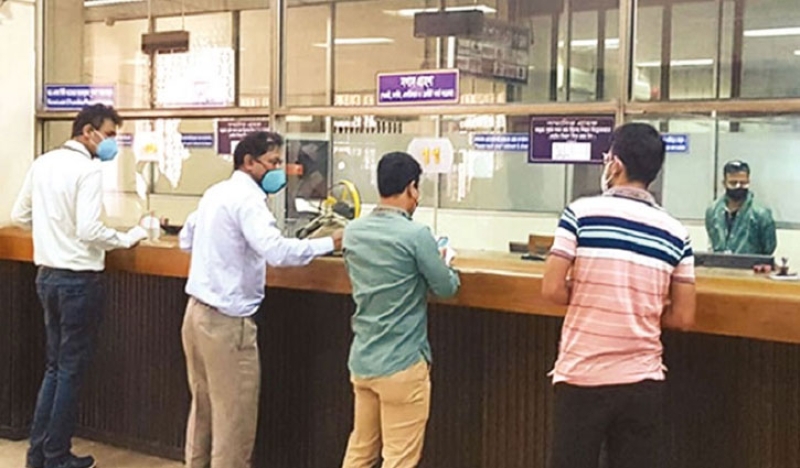- Walton Unveils Bangladesh’s Largest Floating Solar Plant |
- Dreams of July Martyrs remain unfulfilled, claim families |
- Metro Rail Halted on Agargaon–Motijheel Section After Fatal Accident |
- Dhaka’s Per Capita Income Rises to USD 5,163 |
- DSE turnover dips 18% despite weekly gains in key indices |
Gulshan and Motijheel hold 20 percent of Dhaka's bank deposits

Bank clients waiting for transactions
Dhaka, Oct 26 -Motijheel and Gulshan areas hold the highest concentration of wealth, collectively accounting for nearly 20 percent of the total bank deposits in the country.
The combined bank deposits in these two areas amount to Tk3,96,724.73 crore.
An analysis of latest bank deposit data across Dhaka's 57 police stations reveals that the Motijheel and Gulshan areas hold the highest concentration of wealth, collectively accounting for nearly 20 percent of the total bank deposits.
In contrast, the Bhashantek police station area, located within two kilometers of the affluent Gulshan, holds the city’s lowest bank deposits, representing just 0.01 percent of the country's total deposits.
According to the data reviewed as of June 30, 2025, the Bhashantek area had Tk 249.46 crore deposited against 5,725 accounts.
One year prior, on June 30, 2024, the total deposit was Tk244.62 crore in 5,654 accounts.
This indicates that over the one-year period, this relatively low-income area in the capital saw an increase of only 51 accounts and a deposit growth of just Tk5.04 crore.
Motijheel, the traditional center for business and commerce, continues to maintain its supremacy, holding 10.2 percent of the country's total deposits.
The area historically housed the head offices of most banks, and despite many moving to Gulshan, the old business accounts remain active, keeping the deposit volume high.
Gulshan, now the new hub for many bank headquarters, holds 9.7 percent of the national deposits.
Locals in Bhashantek explained the low figures, noting that the area is relatively new and lacks large commercial establishments.
The primary sources of bank deposits are individual savings and small businesses. Given that the area is home to a high number of low-income and working-class people, the number of bank accounts and deposit volumes remain minimal. - UNB

